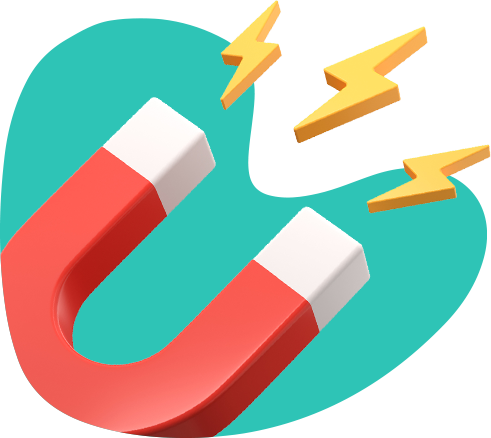Lead Generation for IT & Technology Companies: Our 34 Top Tactics

Key Takeaways:
- Modern B2B buyers demand relevance and speed. With 86% of B2B purchases stalling, tech vendors must align with complex buying journeys with tailored, value-driven communications.
- Differentiation is the secret weapon in a crowded market. Companies that stand out with bold perspectives, unique messaging, and creative positioning see up to 3X higher conversion rates.
- Content must be purposeful. A strategic, stage-specific content strategy across the full customer journey can generate 73% more qualified leads and accelerate decision-making.
- Your website should work like a sales rep. From interactive landing pages to anonymous visitor tracking, turning your website into a full-funnel lead generation engine is one of the highest-leverage moves tech companies can make.
- Marketing automation and account-based marketing drive scale and precision. A full-funnel ABM program enables targeted, personalized, efficient outreach to high-value accounts.
- Strong partnerships and referrals fuel trusted growth. Referral leads convert 4X faster. Collaboration with strategic partners helps you to expand reach in crowded markets.
- Measurement frameworks turn insights into impact. Tracking channel ROI and conversion rates enables smarter prioritization of tactics and continuous performance optimization.
- Stay ahead of trends to future-proof your lead gen. The B2B tech buyer journey is changing. Today’s journey is nonlinear and unpredictable. Stay ahead of trends so that your brand aligns with changing buyer behavior.
The technology buying landscape has fundamentally transformed. Sales teams now face a complex ecosystem characterized by shrinking budgets, AI-driven solutions, and increasingly sophisticated B2B lead generation processes.
Forrester’s The State Of Business Buying 2024 report found that 86% of B2B purchases stall before completion, and 81% of buyers end up disappointed with their vendor choice. Modern IT decision-makers do their homework independently but still want vendors who understand their specific challenges and can respond quickly with collaborative solutions.
To successfully convert potential leads and transform website visitors into leads, you need B2B marketing strategies that deliver the right message at the right time—one that directly addresses pain points and shows clear value.
A Framework for Technology Marketing Success
Tech buyers don’t want more marketing—they want genuine help making complex decisions. Companies that provide this consistently outperform their competition.
How These Strategies Work Together
Each strategy we’ll cover includes details on how hard it is to implement, what resources you’ll need, when you’ll see results, real-world examples, and how to measure success. The best part? They work even better together. Top-performing tech companies typically use 12-15 of these tactics simultaneously, focusing on those that align with their specific goals.
Standing Out: Marketing That Gets Noticed
Turn Your Website Into a Lead Generation Machine
Content and SEO (Search Engine Optimization) That Drives Quality Leads
Target Your Best Prospects With Account-Based Marketing
When sales and marketing share accountability for account outcomes, both conversion rates and deal sizes improve dramatically.
When a dedicated management team unites marketing and sales, it sets the stage for smoother handoffs, less friction, and better-qualified leads. This alignment also helps eliminate redundancy or confusion and ensures more consistent messaging across channels.
25. Personalize Your Outreach
Difficulty: More challenging | Results Timeline: 60-90 days
Customized experiences for target accounts drive higher engagement, as shown in our work with Provenir.
What to do:
- Configure product demonstrations highlighting features that address each account’s specific challenges
- Create content addressing industry-specific pain points
- Develop proposals showing specific implementation approaches for each account
Personalization at this level leads to stronger engagement and faster deal progression.
26. Use a Multi-Tiered Approach
Difficulty: More challenging | Results Timeline: 60-90 days
Different account segments require distinct ABM approaches.
What works:
- For your largest opportunities: Highly customized 1:1 campaigns
- For similar accounts: Targeted campaigns addressing common challenges
- For broader segments: Scalable personalization using technology
A smart segmentation strategy empowers you to tailor different tactics for enterprise vs. mid-market B2B accounts. This approach makes it easier to manage personalization at scale without overwhelming your team.
27. Continuously Optimize
Difficulty: Moderate | Results Timeline: 30-45 days
As demonstrated in our AppFolio project, systematic testing and sales funnel optimization improve campaign performance over time.
What to do:
- Test different value propositions across account segments
- Gather feedback from target accounts to refine your messaging
- Track engagement metrics to identify the most effective tactics
Optimization isn’t a one-time effort—it’s an ongoing discipline. A team that combines AI insights with manual review and human insight can surface areas for refinement across messaging, offers, and cadence—improving conversion rates over time.





